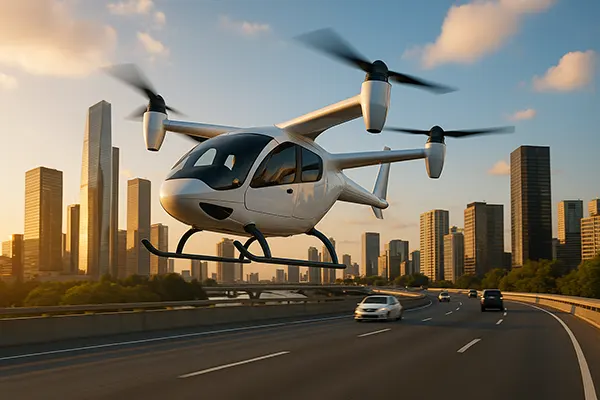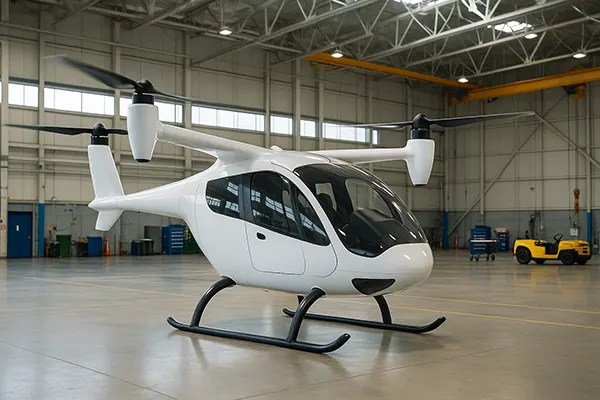
Air Taxis in Major Cities: When and How They Will Become Part of Everyday Transport
Urban mobility is on the brink of a technological transformation, with air taxis promising to redefine transportation in metropolitan areas. These vertical take-off and landing (VTOL) vehicles, often electric and autonomous, are positioned to tackle traffic congestion, reduce travel time, and support sustainable transit. But the question remains: when and how will they transition from prototypes to everyday reality?
Infrastructure and Regulation: The Foundations of Urban Flight
For air taxis to integrate into urban life, cities must develop supporting infrastructure such as vertiports, recharging hubs, and air traffic management systems. Projects in cities like Paris and Dubai have already begun constructing these vertical hubs, anticipating commercial launches within the next few years. Urban air mobility (UAM) networks will require coordination between aviation authorities, city planners, and private stakeholders to ensure smooth operation.
Additionally, regulatory frameworks must evolve. In the EU, the European Union Aviation Safety Agency (EASA) has introduced guidelines for the certification of VTOLs and vertiports. Meanwhile, the U.S. Federal Aviation Administration (FAA) is working with manufacturers such as Joby Aviation and Archer to certify vehicles and establish safety protocols. These actions are paving the way for test flights and commercial rollouts in late 2025 or early 2026.
The integration of air taxis into existing urban mobility frameworks requires collaboration between government agencies, private sector innovators, and public service providers. Without comprehensive legislation and public trust in safety, large-scale adoption is unlikely to happen in the near term.
Early Adoption and Pilot Programmes
Some cities are leading the charge through pilot programmes and limited trial routes. For example, South Korea launched test flights over Seoul in 2023 and aims to establish commercial air taxi corridors by 2026. Similarly, in the United Arab Emirates, a partnership between Volocopter and Dubai’s Road and Transport Authority is set to launch operations by 2026.
These early adopters serve as testing grounds to study urban air traffic management, noise levels, environmental impacts, and public acceptance. Data collected from these cities is essential in shaping international standards and operational models that other regions can adopt.
Initial services are expected to cater to premium customers or emergency response, but as production scales and costs decrease, broader accessibility will follow. Cities with high tourism or major business hubs are likely to see early commercial use cases.
Technology and Vehicle Readiness: From Prototypes to Production
Technological readiness is another cornerstone for successful air taxi implementation. As of June 2025, several companies such as Joby Aviation, Lilium, and Vertical Aerospace have conducted extensive test flights with certified prototypes. Joby, for instance, has completed over 1,500 flights and received FAA Special Airworthiness Certification.
Battery technology is a critical factor. Most air taxis are electric, requiring lightweight, high-capacity batteries that ensure safe and efficient operation. Solid-state batteries and rapid charging solutions are being developed to extend range and reduce downtime between trips.
Autonomy is also progressing rapidly. Many VTOLs will be piloted in the early stages, but autonomous operations are anticipated in the next decade. AI-powered navigation systems, remote fleet monitoring, and real-time data analytics will play vital roles in ensuring safety and reliability.
Manufacturers and Industry Leaders
Major players in the market are accelerating development with significant investments. Joby Aviation, backed by Toyota, and Archer Aviation, partnered with United Airlines, are leading the American push. In Europe, Lilium is making strides with its jet-powered eVTOL, while EHang dominates the Chinese market with autonomous drones.
Collaboration between tech firms and aerospace giants, such as Airbus and Boeing, signals a serious commitment to scale urban air mobility. These alliances focus on certification, scalability, and cost reduction to meet commercial demand.
Public-private partnerships are also emerging as key accelerators. In Japan, for instance, the SkyDrive consortium supported by Suzuki and the Japanese government is planning air taxi services for the Osaka World Expo 2025.

Environmental Impact and Public Perception
One of the most significant benefits of air taxis is their potential for sustainability. Electric VTOLs emit no carbon dioxide during flight and offer a quieter alternative to helicopters. This makes them attractive to cities striving to meet net-zero emissions goals by 2030 or 2040.
Nevertheless, challenges remain. Battery production and energy consumption still have environmental footprints, and public perception varies across regions. Concerns about noise pollution, flight safety, and airspace congestion must be addressed through transparency and community engagement.
Moreover, equitable access to air taxis is a pressing concern. If these services are priced as luxury offerings, they risk widening social inequality in urban mobility. Cities must plan for inclusive infrastructure and pricing models to ensure air taxis serve all demographics, not just elites.
Societal Acceptance and Education
Public education campaigns are vital in fostering trust. Familiarising citizens with air taxi technology, safety protocols, and environmental benefits can mitigate resistance. Transparent communication about risks and emergency procedures will also build credibility.
Community feedback mechanisms can help city authorities understand residents’ concerns. Successful integration depends not only on technology and infrastructure but also on social readiness. Cities that listen and adapt to public input will see higher adoption rates.
Schools and universities are increasingly including urban air mobility topics in STEM curricula, preparing the next generation to embrace and work with these innovations. Public demonstrations and interactive experiences will help demystify air taxis for everyday users.
